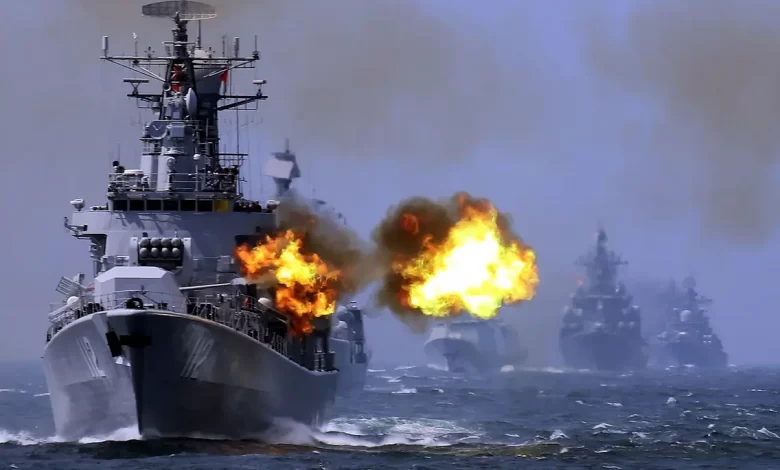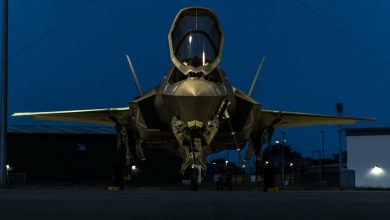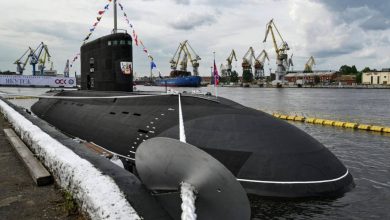Analysis: Could a US-China War Begin over the Philippines?

Washington’s risk-prone urge to deepen military alliances, juxtaposed with Chinese adventurism, threatens peace in Asia
The ASEAN leaders’ summit in the picturesque seaside town of Labuan Bajo in Indonesia concluded this week with the crisis in Myanmar being a core focus of the talks.
Myanmar’s brutal civil war is indeed the biggest challenge the otherwise highly successful regional grouping has faced since the late 1990s financial crisis in the region. ASEAN has thus far struggled to rein in the junta’s harsh crackdown, and the pre-summitattack in Shan state on the grouping’s humanitarian aid workers didn’t help matters.
The ASEAN summit also called for the “exercise [of] self-restraint in the conduct of activities that would complicate or escalate disputes and affect peace and stability” in the South China Sea, a clear reference to China’s aggressive actions in pursuing its excessive maritime claims. However, recent developments in the U.S.-Philippines alliance are also complicating and escalating the security dynamic in the region. There are troubling signs that the United States has effectively inducted the Philippines into its strategy of China-encirclement.
The latest bilateral defense guidelines issued by the Pentagon in the wake of President Marcos Jr’s recent visit to Washington reiterated the February 2023 invocation of the 1951 Mutual Defense Treaty (MDT) — the agreement that governs the U.S.-Philippines alliance — in case of “an armed attack in the Pacific, to include anywhere in the South China Sea, on either Philippine or U.S. armed forces – which includes both nations’ Coast Guards – aircraft, or public vessels.”
A similar commitment was also made in 2019 by Secretary of State Mike Pompeo, serving under President Trump.
The repeated assertions of commitments on conditions for direct U.S. intervention disregard the new reality of the power balance in the South China Sea, which is nothing like the 1970s when maritime jostling by claimant states took off in earnest. China’s relative power today is far greater than it was back then. When power balances change so radically, shouldn’t the United States reflect on whether past commitments of when it will intervene directly, putting its own troops at risk, need to be gradually modified in ways that reflect new power realities?
This is a question explored in greater depth in a recent Quincy Institute Brief on Asian alliances and partnerships.
The defense guidelines also speak of the “continued conduct of bilateral exercises and training and combined maritime activities, including but not limited to joint patrols.” Such joint U.S.-Philippines patrols – of their navies, or even coast guards – in maritime areas where China has achieved control or denial capabilities can easily provoke, even if that is not the intent. This can turn localized jostling into a U.S.-China confrontation very quickly in the presence of U.S. craft escorting Philippine vessels. The talk of U.S. ally Australia joining such patrols can only add more fuel to the fire.
Part of the problem of course is that China has been pushing its luck with an expansive maritime claim, ruled illegal by an international court in 2016. Further, it has occupied some of the South China Sea’s features and reclaimed and built military facilities on them. Beijing deploys sub-military, gray-zone tactics to achieve denial or control in the Spratly islands and their neighborhood — for instance, its deplorable shining of a military-grade laser recently on a Philippines ship. A more serious incident took place in 2012, during which China took control of Scarborough Shoal, damaging ties with the Philippines.
But China is not the only state that pursues expansive claims in the South China Sea. Taiwan’s claims are virtually identical to China’s, and it has long occupied the South China Sea’s largest feature, Itu Aba. Vietnam is actively reclaiming the features it controls and also employs its own maritime militia of the sort Beijing does.
The risks from the China-Vietnam contestations are relatively bounded, as Vietnam practices deep strategic autonomy and is an ally of no other power. However, a Philippines-China clash, with the United States (and perhaps Australia) frontally present in the theater as an ally, can plausibly escalate to a great power conflict.
Most dangerously, Washington seems to be using the Philippines as a proxy pathway in its Taiwan gambit. As I have written previously, three of the four new U.S. military sites (under the 2014 Enhanced Defense Cooperation Agreement, or EDCA) are located in northern Luzon, uncomfortably adjacent to the Bashi Strait. The strait is a critical element in the U.S. military strategy to contain China within the first island chain.
Thus, the location of most of these new sites have little to do with the contested areas of the South China Sea. They have some utility for disaster relief (the other justification for expanding these sites), but this ought to be balanced against their risks of provoking tensions and conflict over the extremely dangerous flashpoint of Taiwan.
The United States should indeed support its ally the Philippines, but from the rear, and in a way that further bolsters Manila’s own capabilities in pursuing defensive gray-zone tactics and enhancing maritime domain awareness.
Taking a frontal role in defending Philippines’ stakes and assets in the South China Sea, and especially utilizing the Philippines as a route to pursuing a Taiwan-centered strategy of containment, will only bring us closer to sparking a great power war. But most of all, Washington should encourage dialogue and rapprochement between ASEAN and China, and proactively support the Code of Conduct negotiations, which are currently making minimal progress (though that is partly due to China’s recalcitrance.)
The U.S.-Philippines alliance has long co-existed with ASEAN’s dynamic and successful evolution. There is no necessary contradiction between ASEAN’s careful and inclusive approach and individual member states’ relations or alliances with other great powers. However, when external powers act to push the envelope toward confrontation, regional stability and integration can be seriously threatened.
As among the Global South’s fastest growing regions and an increasingly important trading partner, a Southeast Asia that is flourishing and at peace is a tremendous opportunity for the United States. Washington should be careful not to endanger its stability and prosperity.





